
“We’ve got drive-up food on one side of the street and drive-up birding on the other.”
When Molly Stoddard retired from her job at the Prairie Wetlands Learning center at the end of the July, her life, like that of many retired people, got even busier. Not surprisingly, the former US Fish and Wildlife Service Instructional Systems Specialist will still be teaching classes at PWLC, volunteering in the community she’s called home for almost 20 years, consulting in environmental education, and pursuing her blooming interest in decolonizing food systems, gardens and landscapes. Oh, and there was a trip to Ireland in there, too.
But Stoddard’s passion for birds and birding continues unabated, and she was excited to talk about the rookery in Fergus Falls’ Adams Park and what it means to her community and the students she’s introduced to it over the years.

“When I moved here there were two rookeries in the city: one on Grotto Lake and the other on Lake Alice, which is just north of downtown a couple blocks,” she says. “That was flabbergasting to me. Where I grew up in Illinois, Great Egrets are a threatened species; I think they still are. That’s one notch under “endangered.” And you have to work really hard to see them in a rookery setting, normally. It’s virtually unheard of that you could visit them in a city! Drive right up and listen and observe; you don’t even need binoculars.
“It’s very unusual to be able to get this close to colonial nesting birds. Colonial nesting birds are species that nest together in groups. A robin doesn’t nest with other robins on the same branch or the same tree. But egrets and cormorants, the Black-crowned Night-heron, those are colonial nesting species. The advantage of that is more eyes and ears are alert for predators and danger.
“Oftentimes if you approach a rookery like this in the wild, you get a certain distance away and they’ll fly up and away. That doesn’t happen here. They seem to be accepting and accommodating of people being so close.”
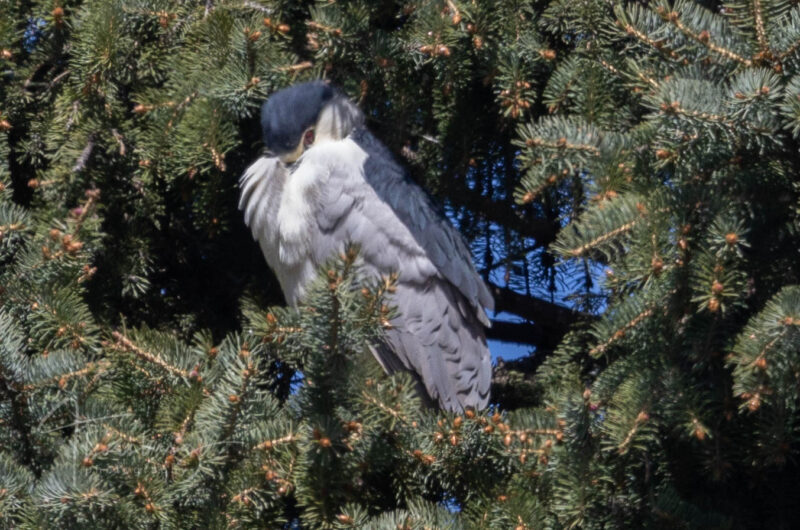
“The magic there is that it’s accessible to any kid on a bike in town”
“The magic (at Adams Park) is that it’s accessible to any kid on a bike in town,” Stoddard says, and that goes for folks with disabilities or mobility issues as well. “You can drive up and view these birds; you don’t even have to get out of your car. They are available to anyone and everyone. You don’t have to get in a kayak and paddle for hours to reach them. We’ve got drive-up food on one side of the street and drive-up birding on the other.”
Stoddard says visitors to the rookery can view, pretty up-close and personal, all the lifecycle stages from the birds’ arrival in mid-late April: males choosing nest sites, competing for females, mating, nest building, turning eggs, feeding young, siblings fighting. And that is exactly what she wants local school kids to observe, also.
“At Prairie Wetlands, we work in a very close partnership with our school district and bring 100 4th graders there every spring for a day to go birding. We use binoculars and spotting scopes to observe them; we sketch the birds, there’s a station where they can learn facts about the birds, and we go for a walking tour of the whole park observing birds. We can easily find 15-20 species of birds with our eyes and ears. Common grackles nest in the evergreen trees there; that’s a fourth species of colonial nesting birds. All together in this little city park: four species that are colonial nesters.”

The history of the rookery at Adams Park
Fergus Falls’ Steve Millard is in his 50th year of birding and has been spending springs and summers at the rookery since the 1980s.
Back then, it was the go-to spot for green herons, he says, who nested in the saplings and heavy undergrowth beneath the big trees in the park. “They frequently nest singly; scattered around, but green herons will nest colonially under the right circumstances,” says Millard. When the City cleared out the vegetation around the trees though, the green herons went elsewhere. After a few years, Great egrets and Black-crowned night herons moved in, along with the cormorants.
Rookery is a tourism draw for the community as well.
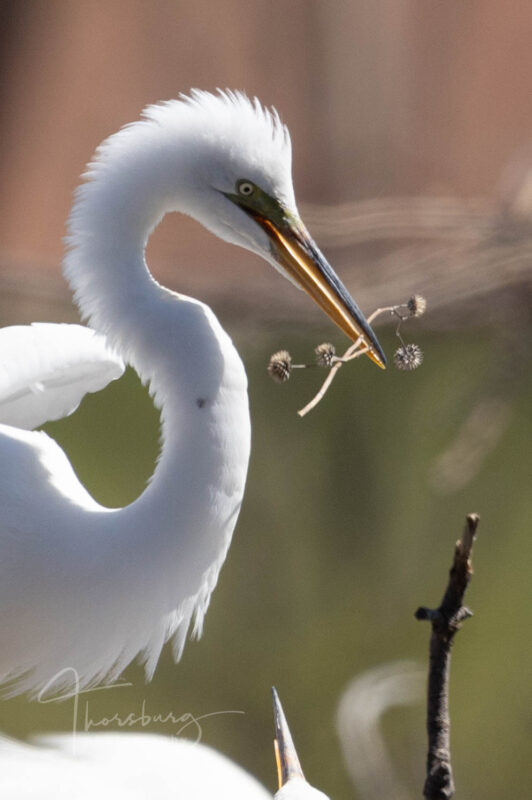
“People do come from quite a distance to observe the birds,” says Molly Stoddard. “In the last week I’ve talked to a birder down in the Princeton area who’s bringing a group up to observe the rookery, and since the winter I’ve been getting regular phone calls from a woman in Saskatchewan who was trying to time a visit down here to see the young. I always see someone down there with binoculars or a camera; people who are there specifically because of the birds. It certainly adds to the attractions for Fergus Falls.
“The tourism folks are well aware of it and I think they do some promotion of it. Last summer and fall a group of us birders were meeting there once a week to talk about how we could promote it more, but also, because we were concerned about the rookery aging out and wanted to do some problem-solving about that. We’ve been trying to work with the City to possibly put some artificial nesting platforms on the island but that’s been slow going, to be honest.”
“That would be wonderful, if people could find common ground about it.”
Over the decades of its existence on Grotto Lake, the community has been divided about the rookery. Molly Stoddard knows that and it’s why she’s devoted herself to efforts to find that common ground.
“That would be wonderful, if people could find common ground about it. I don’t have the answers; it is noisy. It is smelly. Your car is going to get pooped on. It’s not perfect, by any means. But I also think maybe we the community can work on that. That’s why some of us, as birders and people who care about these birds and this rookery, started to meet and talk. And I did this as a private citizen, by the way, not as an employee of the Fish and Wildlife Service – I want to make this clear, because I live in this community, not just work in it. We try to go through the proper channels with the City of Fergus Falls to start some discussions with them about what some options might be for them to consider. That would be wonderful – I think that would be tremendous if people were willing to come together and problem solve.”
The experience of seeing these birds in person does something special for people
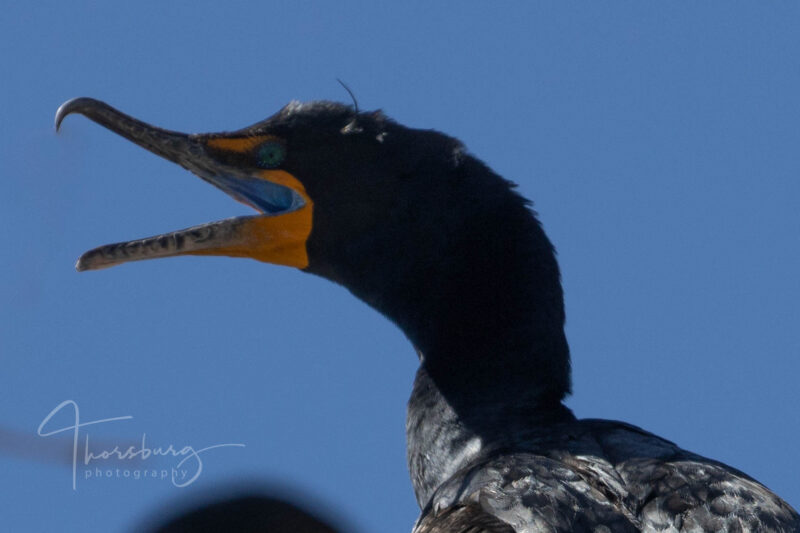
“It connects us with the rest of the world – the natural world that’s all around us,” says Stoddard. “It sparks our sense of wonder when you see that for the first time and you realize how the inside of a cormorant’s mouth – the blue, that shocking blue – matches the eye color of the birds – it just fills you with awe and wonder. There’s no other way to describe it. A sense of wonder is something Rachel Carson wrote about, that we lose sight of as adults. Children have it, but as we grow older and get more responsible, we neglect that part of our senses – our sense of wonder. We need to feed it! This is a great place to feed your sense of wonder.”
Update: the rookery at Grotto Lake was changing already
Molly Stoddard says local birders began noticing far fewer birds at the rookery beginning around mid-June. “In the last week or two we’ve noticed far fewer egrets. Something has caused them to leave the rookery. When I last looked, there were only about a dozen birds – egrets – there at sunset. There were lots of cormorants, and this is typical of the life cycle of a mixed-species rookery like this one. Cormorants eventually take over, which is what seems to be happening. But why the egrets left when they had eggs and nestlings and young to feed – why they left now? This seems very strange. I’m in conversations with the Nongame Wildlife Specialist in the DNR (Minnesota Department of Natural Resources) for this area to see if maybe they can investigate and see what happened.
“We don’t know if they were disturbed off by people? We don’t know if they were disturbed off because the cormorants have pushed them off the island and all of the trees have died. All of the guano – the ‘whitewash” from the birds – acidifies the soil and that ultimately kills the trees. So it could be a combination of factors or it could be something we haven’t thought of. We really don’t know.”
Then in the last week of June, the rookery was suddenly abandoned, leaving local birders, the DNR, and people like Molly Stoddard and Steve Millard scratching their heads. Because in nature, things don’t usually happen that suddenly.
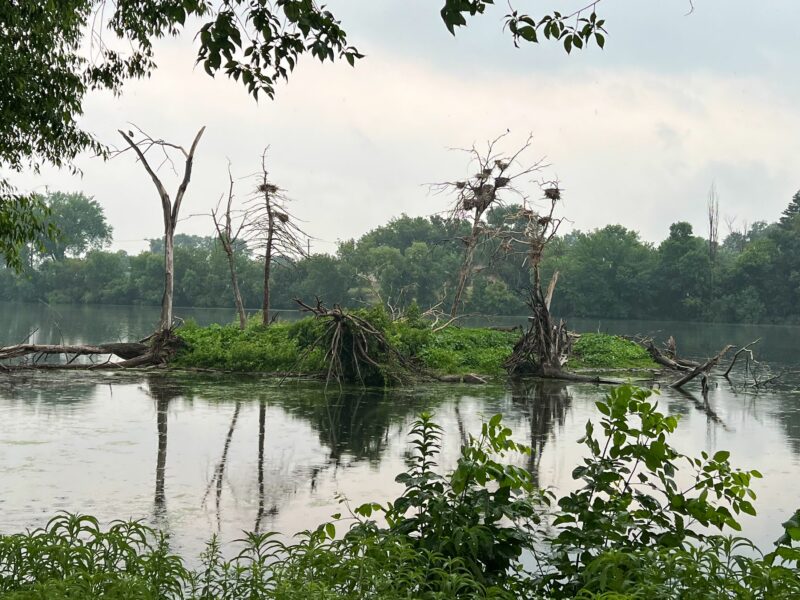
“I have no explanation for why an entire colony of birds would just up and leave,” says Millard. “It’s almost spooky.”
Millard is one of the people who have been observing the changes there over the decades. “Once the cormorants come in that’s basically it,” he explained. “Then it’s over after a few years because there’s so much defecation the trees can’t take it.”
Unusually, though, the egrets and herons of the rookery weren’t going to give up on Adams Park so easily.
“Something weird about this Grotto thing: once the island breeders had started to ruin the trees, the Black-crowned Night-herons discovered it was safe to nest in the trees on the shore,” says Millard. “It’s probably not unique to this rookery although I’ve never heard of this happening before. The reason for rookeries being on islands is that they’re safe from predators, but apparently these Black-crowned Night-herons found out ‘Hey, we can nest in these shore-side pines on the north side of the lake and nothing’s going to bother us.’ They started roosting and nesting in those conifers and building nests and raising young, and within the last three to five years, the Great Egrets also started to move into those conifers. And then on the south side of the lake, which is basically deciduous, the egrets started moving in there, so they were nesting less and less on the island and more and more on the shore-side trees.”
Still, this sudden disappearance of all the birds from the rookery is raising more questions than it’s answering. “It’s almost scary why there are no birds there in the last few days,” says Steve Millard. “I don’t know what would have caused this mass exodus of several different species of birds but there doesn’t appear to be anything left.”
Local birders and entities like the DNR will be looking into the mystery, but it may take until next spring for any real answers.
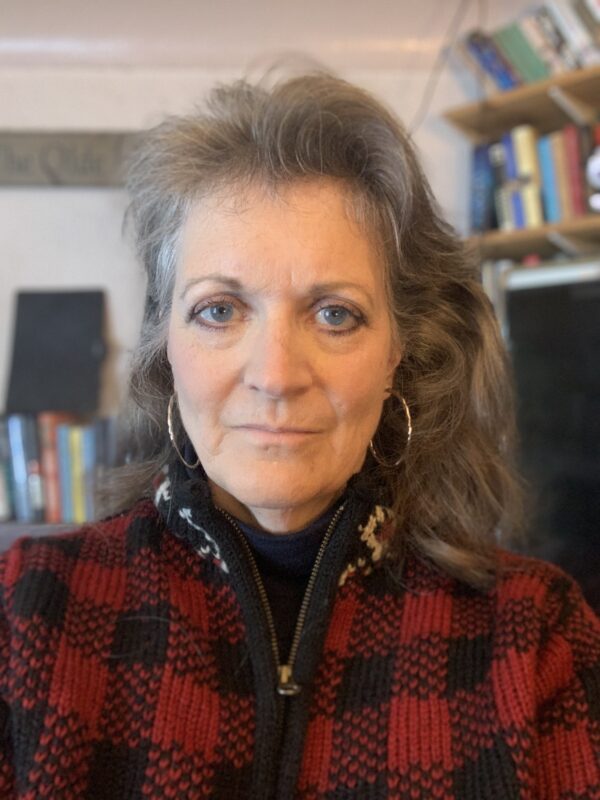
“Looking for Common Ground” is a series written for Upstream by Regional Organizer Organizer Lisa Johnson. Johnson has been a broadcast journalist for over 40 years and recently relocated to west-central Minnesota to be closer to family. She has one fabulous child who lives in Minneapolis and four dogs who all, alas, live with her.
What’s Your Upstream Story?
We share stories of stewardship written by and about Minnesotans like you! Share your story here.